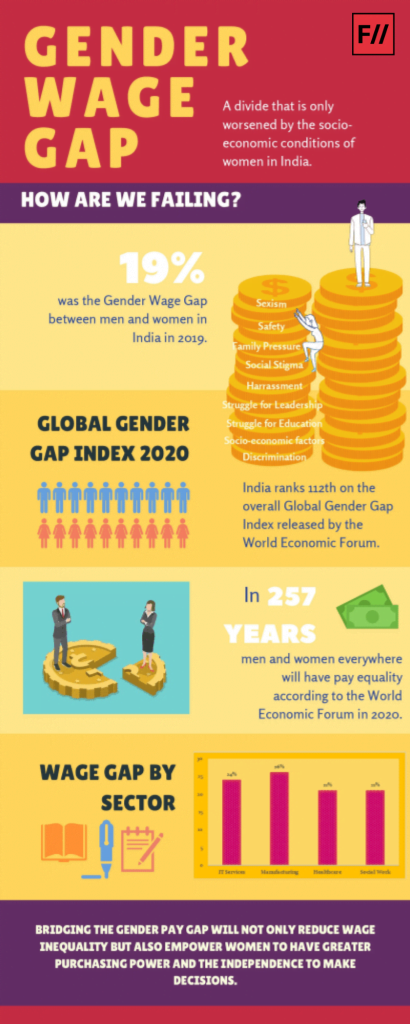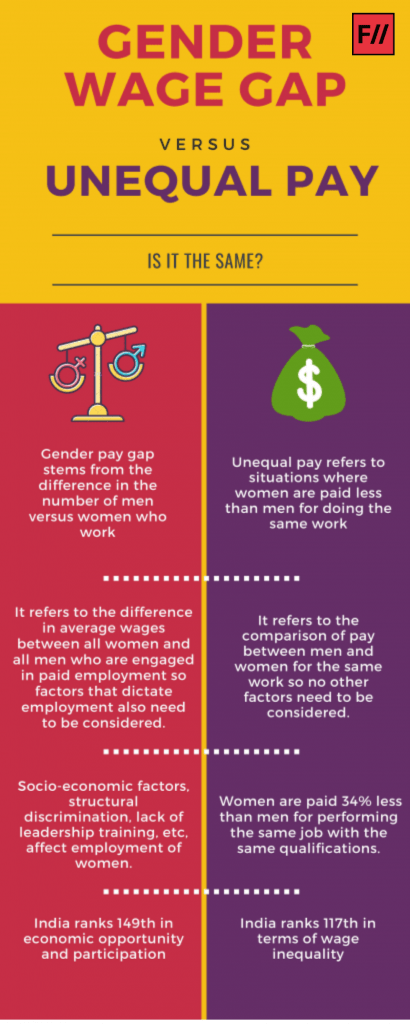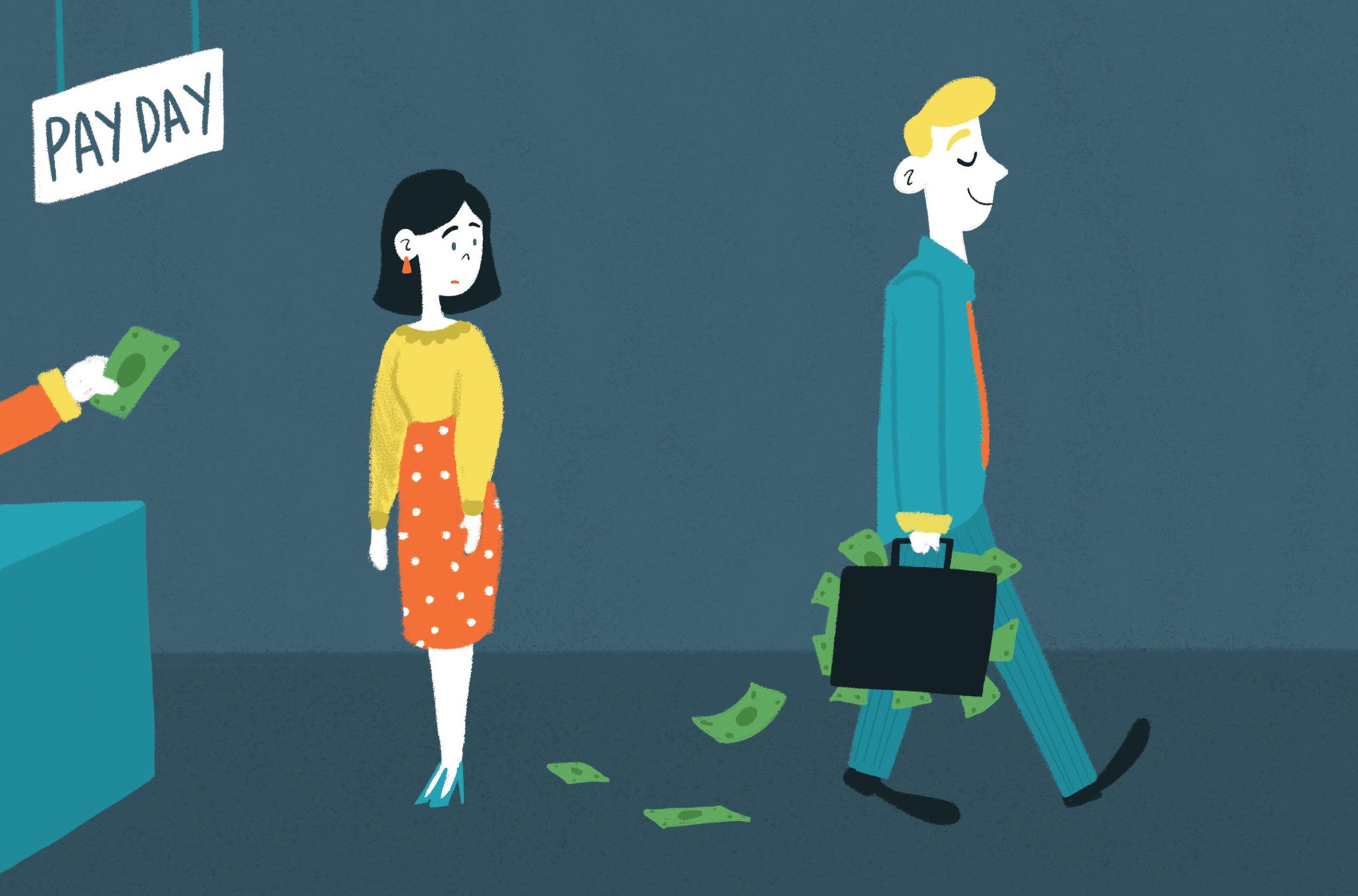Gender Wage Gap is defined as the difference between the median earnings of men and women, i.e, it considers all men and women who fall under the ambit of paid employment.
According to the Gender Gap Index in 2020, India has slipped to the 112th position from the previous 108th in 2018. According to the report, it will take India close to 100 years to bridge the gap in areas of politics, economy, health and education. It ranks 149th in economic participation and opportunity, and 117th in wage equality for similar work.
While at first glance, gender wage gap just looks like the average difference between the earnings of men and women (and thereby an issue that has to do predominantly with salary). However, there are several layers that need to be analysed within this issue. Since it takes into account the earnings of ALL employed women, there are several reasons why there is a wide wage gap between the employment of the two genders owing to discrimination in terms of opportunity, education, etc.

In India especially, the gap is exacerbated by the social and structural oppression that women have to face. The skewed sex ratio in labour participation is one of the largest reasons behind this widening gap. Women in India have to deal with a set of complex issues ranging from less access to education to social stigma surrounding work after marriage/childbirth. According to the Monster Salary Index in 2019, around 46% women believe that there is a perception that they will quit after maternity leave. There is also a general stereotype of women not performing well in leadership positions, possibly due to their commitments to their family or household, which leads to a fall in the number of women who get the opportunity to undertake such roles.
Also read: Equal Play, Equal Pay: The Gendered Pay Gap In Indian Cricket
A survey by Monster.com reported that nearly 60% working women in India face discrimination at work and over one third women believe that they are not easily considered for top management roles. Out of the women who were surveyed, nearly 86% of women consider safety as a factor while choosing a job and nearly 50% of them find the night shift unsafe and unpreferable. These problematic factors lead to a fall in the number of women that join the workforce in every sector and consequentially widen the gender wage gap between men and women. It is interesting to note that in the formal sector, the trend of the gender gap follows an upward path. According to the Monster Salary Index, the gender pay gap widens as the years of experience increases. While the pay gap in the initial years is moderate, it rises significantly as the years of employment increase.
While the gap is measurable in the organized sector like IT, Healthcare, etc., the unorganized sector routinely underpays women as compared to their male counterparts. Women labourers are assumed to have low skill levels on entry, a lack of access to on-the-job training and responsibilities of family which leads to them gaining lesser opportunities of employment and being paid less on the job. This male-dominated sector that identifies only men as the primary earners, is rife with sexual harassment, discrimination and payment of lower wages to women on a regular basis.

Also read: Paternity Leaves: The Sexist Gap In Our Parental Policies
Pay disparity and an expansive gender gap are issues that cannot be addressed without first addressing the underlying social injustice that makes this gap possible. Empowering women and bridging this gender gap is the only way to build equality in the workforce. It is important to note that the chasm that exists between the perceptions and work lives of men and women has significant implications, one of which is unequal pay. Therefore, closing the gender wage gap is a destination that requires us to take a path of removing social stigma around working women, encouraging women participation in the labour force and creating safer environments—without which it will be impossible to achieve true equality of women in the workforce.
Feature Image Source: Daliy Titan
About the author(s)
Vaishnavi Singh is an alumnus of The Young India Fellowship at Ashoka University. She is deeply interested in exploring the less understood aspects of something as vast and ever-changing as feminism. Vaishnavi is an opinionated introvert who loves travelling, watching movies and reading everything that she disagrees with.




